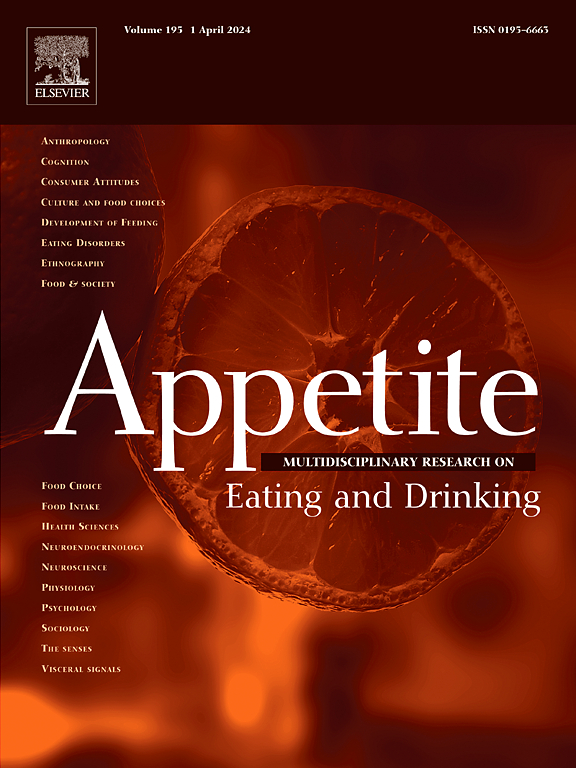通过产品植入、促销提示和价格干预在澳大利亚食品救济储藏室促进更健康的食品购买。
IF 3.8
2区 医学
Q1 BEHAVIORAL SCIENCES
引用次数: 0
摘要
对澳大利亚粮食不安全的主要反应包括提供粮食救济。有证据表明,粮食不安全状况较严重的人无法经常获得足够的营养食物来满足饮食需求。在食品零售环境中,轻推等营销技术通常用于影响消费者购买,但在食品救济部门,使用这些技术来支持更健康的客户购买并不常见。本研究测量了在两个客户选择的食品救济储藏室中,使用促销提示和产品植入(2P)来推动店内购买和商店展示的有效性,随后在可自由支配的零食和含糖饮料中添加了价格干预(3P)。两个食品储藏室都经历了四个连续的阶段:9周的基线,12周的2P干预,6周的3P干预,以及8周的干预后。食品和饮料的营业额是用产品的净重量和一个专门设计的决策矩阵分类工具来测量的,该工具根据食品组和营养颜色类别来组织食品。评估店内陈列是否符合干预要求,以及对这些食物组和营养颜色类别的潜在暴露。与基线相比,2P的实施,无论是否增加了建议零售定价3P,都成功地促进了健康食品的购买:2P显著增加了新鲜水果和蔬菜等更健康选择的营业额,减少了随意零食和含糖饮料的营业额。3P的应用放大了这些变化,一些效果在干预后持续存在。研究结果表明,无论有没有定价策略,只要健康核心食品供应持续充足,推动健康食品采购都能在这些环境中实现。本文章由计算机程序翻译,如有差异,请以英文原文为准。
Facilitating healthier food purchases through product placement, promotional cues, and pricing interventions in Australian food relief pantries
A primary response to Australia's food insecurity involves provision of food relief. Evidence suggests those with more severe food insecurity lack regular access to sufficient nutritious food to meet dietary needs. Marketing techniques such as nudging are commonly used in food retail environments to influence consumer purchases, yet use of these to support healthier client purchases in the food relief sector is uncommon.
This study measured the effectiveness of nudging on in-store purchases and store displays in two client-choice food relief pantries using promotional cues and product placement (2P), followed by the addition of a pricing intervention (3P) applied to discretionary snacks and sugar-sweetened beverages. Both pantries underwent four consecutive stages: a 9-week baseline, a 12-week intervention using 2P, a 6-week intervention applying 3P, and an 8-week post-intervention. Food and beverage turnover was measured using nett weight of products and a purpose-designed Decision Matrix classification tool which organised foods based on food groups and nutrition-colour categories. In-store displays were assessed for adherence to intervention requirements and potential exposure to these food groups and nutrition-colour categories. Compared to baseline, implementation of 2P, with or without the addition of recommended retail pricing 3P, successfully enabled healthy food purchasing: 2P significantly increased turnover of healthier options such as fresh fruit and vegetables and reduced turnover of discretionary snacks and sugar-sweetened beverages. Application of 3P amplified these changes, with some effects sustained post-intervention. Findings suggest nudging with or without a pricing strategy can enable healthy food purchasing in these settings, contingent on a consistent and sufficient supply of healthy core foods.
求助全文
通过发布文献求助,成功后即可免费获取论文全文。
去求助
来源期刊

Appetite
医学-行为科学
CiteScore
9.10
自引率
11.10%
发文量
566
审稿时长
13.4 weeks
期刊介绍:
Appetite is an international research journal specializing in cultural, social, psychological, sensory and physiological influences on the selection and intake of foods and drinks. It covers normal and disordered eating and drinking and welcomes studies of both human and non-human animal behaviour toward food. Appetite publishes research reports, reviews and commentaries. Thematic special issues appear regularly. From time to time the journal carries abstracts from professional meetings. Submissions to Appetite are expected to be based primarily on observations directly related to the selection and intake of foods and drinks; papers that are primarily focused on topics such as nutrition or obesity will not be considered unless they specifically make a novel scientific contribution to the understanding of appetite in line with the journal's aims and scope.
 求助内容:
求助内容: 应助结果提醒方式:
应助结果提醒方式:


